
While it’s common sense to most people that the inside of our pots and pans are washed regularly after use, it seems to skip most people’s minds that the exterior of pots and pans also need to be scrubbed to rid it of greasy deposits. In fact, this is often a more arduous task than cleaning the interior, given the absence of a non-stick coating. Well, it’s fortunate that most pans can easily be cleaned using cheap products that should be readily available. Read on for a list of curated tips on keeping your pans sparkly clean.
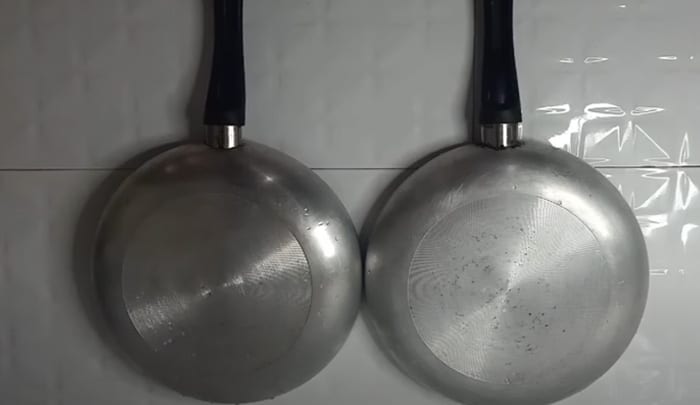
To effectively clean the outside of a pan, first you have to identify the material of your pan. Depending on the type of pan that you have, a special cleaning agent should be used, commercial cleaners tend to be very specific and effective. For all cases, you want to apply the agent a leave it for 8 hours to take effect, after this period, just rinse it with water.
How to Clean Different Types of Pans
You should keep in mind that cleaning pans of different materials will require you to use different approaches.
Stainless Steel: If your pan is a stainless steel one, then you’re in luck as this is one of the easiest to maintain materials around. All you’ll need to do is to gently scrub off the food scraps with 1 or 2 tablespoons of baking soda, before rinsing your pan and drying it thoroughly before putting it away.
Cast Iron: Cast iron pans will need more regular maintenance to uphold their appearance. To prevent rusting of your expensive cast iron pans, avoid washing the pans with water. Instead, salt and potatoes should be used to prevent rust from developing. Some of these pans can surpass the $40 dollar price-tag, so you definitely don’t want to ruin it. Similarly, when to put copper in dishwasher is another important consideration for maintaining high-quality cookware.
Aluminum: For aluminum pans, your best bet is to clean them using a solution of water with 2 lemons and 2 tablespoons of salt. Be sure to avoid bleach and ammonia at all costs as those strong agents will cause surface discoloration by reacting with the aluminum. To prevent unsightly scratches, these types of pans should generally be hand-washed. However, you can put aluminum cookware in your dishwasher under certain conditions, such as when the water temperature is below 50°C and using a gentle cycle.
The Baking Soda-Vinegar Combo
Stubborn stains from burnt grease and scorch marks can sometimes form on the exterior bottom of the pan. Should this occur, you will need to use a stronger cleaning agent to get rid of the stains. While a combination of baking soda and vinegar is effective, there are also vinegar alternatives for cleaning that can be just as powerful for tough stains. First, fill a large pot with equal parts vinegar and warm water, ensuring that your pan can fit inside the pot. After that, heat the pan up and let this mixture boil.
Once it comes to a boil, take the pot off the stove and add 2 tablespoons of baking soda. A short fizzy reaction will be seen, and stains from the pan’s surface will disappear. For the most stubborn of stains, however, some scrubbing will still be needed for them to come off.
If you’re unable to find a large enough container, then another way is to sprinkle some baking soda over the bottom of the pan before adding 5 to 10 drops of white vinegar. Once you are done, use a brush and sponge to brush the surface, before rinsing it well and drying it with a paper towel.
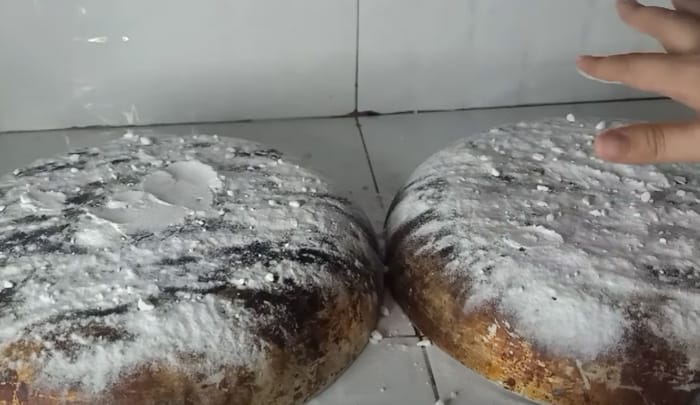
Applying Oven Cleaner
While using an oven cleaner might sound like an easy way to get rid of tough stains, you should try to avoid this unless it’s the last resort. Before applying oven cleaner to the exterior of your pans, be sure to check on your pan’s warranty, as some manufacturers have been known to void the warranty once harsh chemicals have been used in the cleaning of the pan. Most oven cleaners contain sodium hydroxide which is considered a harsh chemical.
If you do choose to proceed with using an oven cleaner, then it is a good idea to use rubber gloves and a mask to protect yourself while doing so. A touchless faucet could be useful as well, similar to when you’re cleaning a coffee maker without vinegar. Safety comes first!
Using Commercial Cleaners for Your Pans
There are various types of pan cleaners available on the market for you to choose from, which can aid in your quest to have a stain-free pan. We recommend finding those that come in a spray bottle, as they are easier to use — all you have to do is spray, wipe in the direction of the grain, and buff to restore the appearance of your pan. For most commercial solutions, simply apply the solution on and wipe it off. Some solutions on the market don’t just remove dust, dirt, and food scraps, but go a step further, specially the ones that contain oxalic acid, this is an excellent cleaner agent. Find those that provide a protective finish that is resistant to grease, watermarks, and fingerprints. After all, the best way to remove stains is to stop them before they can even be formed!
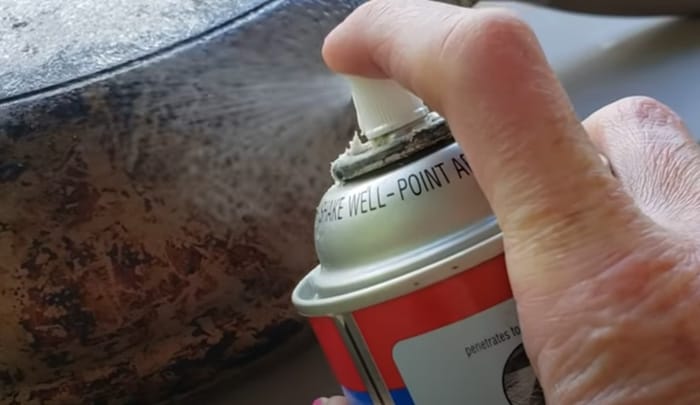
Let it sit
No matter if you use a commercial cleaner or if you use a homemade solution to help your pans regain their former glory in terms of appearance, it is wise to let it sit for at least 8 hours. This can help the solution or cleaner has time to work their magic. Over time, you’ll see that the stain will be much easier to remove once you’ve let it soak up the cleaner or mixture of choice.
Tips to Maintain the Cleanliness of Your Cookware
As the adage goes, prevention is better than cure. It is much easier to ensure that your cookware is clean, rather than continually trying to get dirt and food scraps off it. Here are some tips you can consider following, to ensure your cookware is as clean as possible.
1.-Keep your stovetop clean. A clean stove means that there won’t be residue to transfer to the bottom of your pan. It’s also a good idea to wipe down your stovetop after each use, rather than allowing dirt and grime to accumulate. For glass top stoves, there are easy ways to clean a cloudy glass top stove that can help maintain its appearance and prevent transfer of residue to your cookware.
2.-Clean soon after cooking. Though doing the dishes after cooking seems like a chore, it’s much easier to remove new stains than old crusty ones. Clean your pan once it is sufficiently cooled to prevent food stains from becoming hard to remove.
3.-Store in a clean, dry place. By storing your pans somewhere clean, they will not easily accumulate dust and dirt on the surface. By having them away from your stovetop, you also prevent splatters from grease and food while preparing your meals.
There is a correct method for every material
And there you have it, a curated list of tried and tested tips that will help you ensure the cleanliness of your pans. Now that you know how to do so, be sure to follow these tips so your pan stays in tip-top condition for years to come!

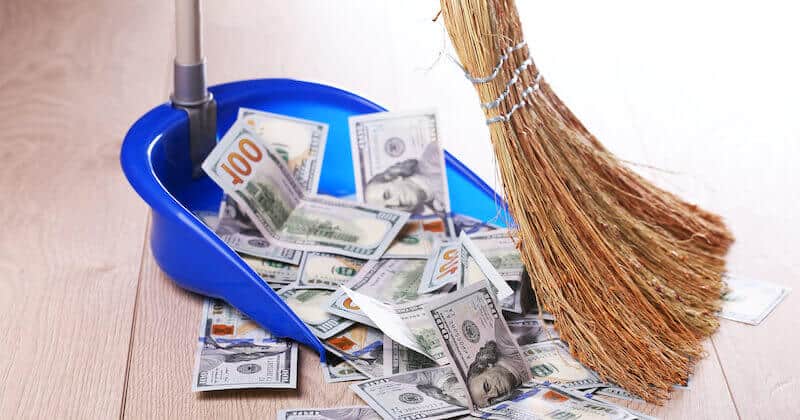
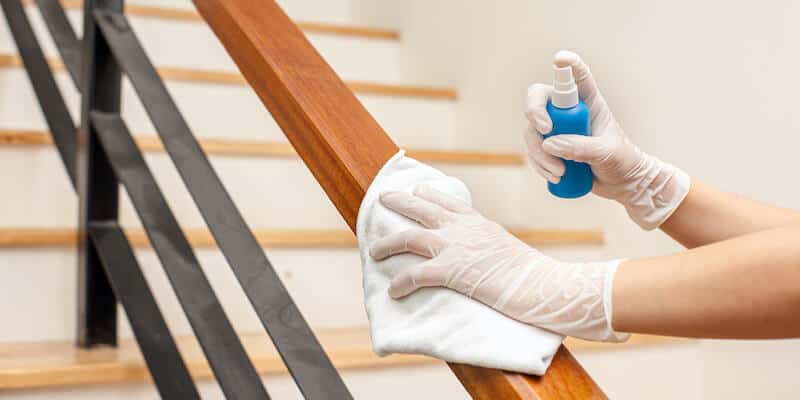


When I started culinary school, my mentor stressed the importance of proper care and cleaning of cooking utensils, including the exteriors of pots and pans, it’s surprising how often this is overlooked.
Agreeing with you Beatrix, keeping the exteriors of pots and pans clean is always emphasized in professional culinary circles. Yet it’s an aspect of kitchen maintenance that hobby cooks often overlook, not realizing its impact on the lifespan of their utensils.
I was strictly meticulous with my equipment while I was an aircraft mechanic and apply the same discipline in keeping my kitchen utensils, including pots and pans, clean and well-maintained on both the inside and out.
You hit the nail on the head, Zeke. As a cop, cleanliness and discipline go beyond the precinct. I use white vinegar and baking soda combo to keep my pans shinier longer, especially the exterior, without spending a lot of time on it.
As someone who has spent more hours than I care to admit polishing the exterior of pots and pans, I can vouch for vinegar and baking soda combo’s effectiveness. The mixture requires very little effort but leaves my cookware looking like new every time. It’s certainly a step above any over-the-counter cleanser I’ve tried before.
I agree with you Tarquin! I’ve been using the vinegar and baking soda combo for years. It not only leaves my pans spotless but also restores their shine making them look brand new. Over-the-counter cleansers have never worked this well for me either.
I totally concur with you, Farrow! Oddly enough, despite my fondness for professionally available detergents before, I’ve also found household items like vinegar and baking soda to be surprisingly more effective in removing grease from my pans. It goes on to show how sometimes simple solutions can produce superior results.
Nolan, I can relate to your experience! Much like you, a mixture of vinegar and baking soda has worked wonders for me too when it comes to removing stubborn grease off the exterior of my pans.
Having spent several years around ceramics, I’ve found that lemon and salt scrubs are particularly effective for exterior grease stains. The acidic content of the lemon breaks up the grease while the salt works as an abrasive to scrub it away.